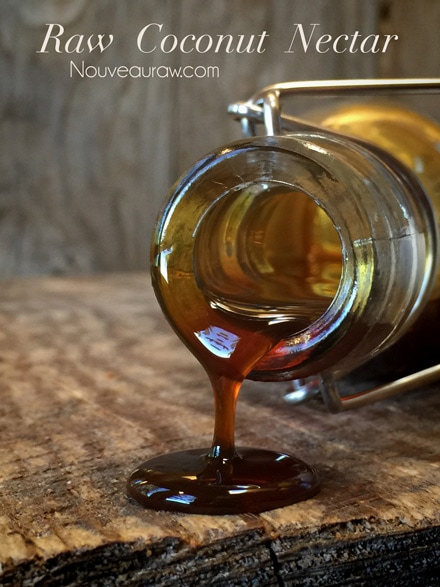


 Add to favorites
Add to favorites
 On every post you read about sweeteners please keep this thought in mind… Just because the dessert recipes on my site (or any other raw site) are raw, created on the foundation of whole foods, and are healthier than the typical SAD (Standard American Diet) desserts… they are still desserts and should be consumed with the same sensibilities.
On every post you read about sweeteners please keep this thought in mind… Just because the dessert recipes on my site (or any other raw site) are raw, created on the foundation of whole foods, and are healthier than the typical SAD (Standard American Diet) desserts… they are still desserts and should be consumed with the same sensibilities.
I am not here to debate which sweetener is better than the other or whether or not you should consume them. You know your own health better than anyone else so you will need to make those determinations for yourself.
Sweeteners, in general, tend to face controversy at some point or another. My suggestion is to use sweeteners in their raw and purest form so be sure to read the labels and if you are really concerned, called the manufacturers.
Some raw sweeteners are vegan and some are not, you decide on what the priority is for you. All we can ask of ourselves is to make the best possible decisions with the information we are given and what is available to us.
I like to mix different sweeteners together for several reasons. By layering multiple sweeteners I can sometimes reduce the overall glycemic load, as well as create layers of flavor and sweetness. Plus, different sweeteners respond textually in unique ways.
For instance, dates not only add sweetness to a recipe but also works as a binder, holding cakes, cookies, and bars together. To keep the sugar levels down, I might add stevia, which bumps up the sweet level without adding more sugars or calories. In raw recipes, you always need to take your health needs into account, the texture that you want from a recipe, and the overall flavor.
It has a mild, sweet taste that doesn’t resemble coconut at all, even though it is derived from coconut sap. Though it is claimed to be a low glycemic sweetener, please test your own body’s response to it. It has a VERY thick, syrupy structure, almost molasses-like. When I pour it into the measuring cup, long strings of sweetness stretch from here to there. :)
For more information about the sap in from which the nectar is made, please click (here).
Many! There really isn’t a right or wrong way to use it. You just have to keep in mind what the desired outcome of the recipe is that you are making. Think about the flavor, texture, and color. Coconut Nectar is very dark in color.
Hi Amie Sue, how do you think about turning coconut palm sugar into liquid (when we are out of stock)? Thanks and Blessings
Good morning Afsaneh,
Hmm, good question. I am sure it can be done but I don’t have experience with that. Do you do that currently? Would love to know how. :) Have a happy day… I insist! hehe amie sue
THANK YOU :))No i have not tried it yet but i am going to give it a try for small batch to see how it turns out to be. I let you know! XO
Please do, I look forward to hearing all about it :)
Coconut necter is delicious in smoothies, on oatmeal and also mixed in with peanut butter for an extra energy boost. Good quality nutrient content, and is gluten free.thanks.
Thank you for sharing Alexander… Happy to meet another fan of coconut nectar. Have a wonderful weekend, amie sue